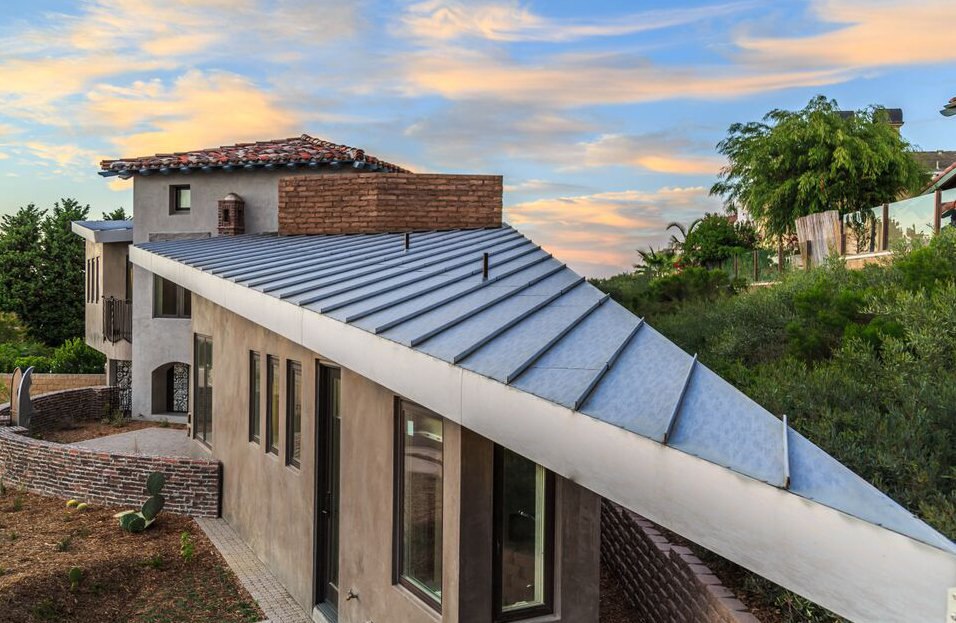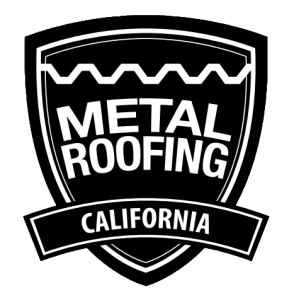Are you ready for or needing a new roof for your home? While replacing a roof is not something homeowners generally look forward to, picking out a new roof is a big decision that shouldn’t be taken lightly.
While Metal Roofing California specializes in metal roofing, we are fully aware that there are many other types of roofing options you may be considering.
We believe that an informed consumer is an empowered consumer. In this article, we have outlined the biggest advantages and disadvantages of having a metal roof to help you make an educated decision on whether or not a metal roof is an option that is right for you.
Metal Roofing Pros
- Low Maintenance
- Resistance To Fires And Rotting
- Longevity And Cost Effectiveness
- Durability
- Energy Efficiency
- Aesthetics
Metal Roofing Is Low Maintenance
Once installed, the maintenance on a metal roof is minimal, especially when compared to other types of roofing.
For example, maintenance on an asphalt shingle roof includes regularly checking for shingles that are broken, buckled, or have blown away and are missing altogether. These shingles have to be repaired or replaced immediately to keep up the integrity of the roof and prevent small issues from becoming larger problems.
With metal roofing, the most you will want to do is remove any leaves, branches, and debris off the roof. You should also keep debris from accumulating in gutters and on the roof itself, as that can lead to corrosion problems in the future.
We also recommend an annual inspection, which is advised for all types of roofing, to ensure that there are no problems forming.
If you have further questions regarding maintaining your roof we recommend:
Metal Roofing Is Resistant To Fires And Rot
Metal roofing will not rot or have problems with mildew. It also isn’t susceptible to termite or rodent infestation.
A big advantage to metal is that it’s one of the few fire-resistant roofing materials. It has the best fire rating available, making it ideal for areas that are prone to wildfires.
Metal Roofing Fire Rating
Metal has a Class A fire rating. The Class A fire rating in accordance with UL790 is defined as roof coverings, which are effective against severe fire exposure. This means metal is not readily flammable and doesn’t carry or transfer fire. In addition, it provides fire protection to the roof deck. There aren’t any frequent repairs necessary in order for a metal roof to keep its fire resistance properties.
It’s important to note that metal’s Class A fire rating does not automatically make the entire roof a Fire rated system. A fire rated system has to be designed. There are other considerations that go into a fire rated system such as type of underlayment and substrate.
Metal Roofing Longevity: Cost-Effective In The Long Term
A metal roof can last anywhere from 40 to 60 years or possibly longer. Hiring a qualified contractor is vital to a metal roof’s longevity. With the correct installation, a metal roof is more likely to last longer.
In comparison, an asphalt shingle roof will last roughly 10-20 years before needing to be replaced. While a shingle roof can cost half the price of a metal roof in some instances, a metal roof can last up to 6 times as long. In the long term, you are saving money with a metal roof.
Durability of Metal Roofing
Metal roofing can be designed to sustain wind gusts up to 140 miles per hour, making it an excellent roofing choice in areas with extreme weather conditions. A metal roof also will not crack, chip, or warp. The thicker the gauge of the metal, the more durable the roof will be.
Metal can withstand impact from falling objects (hail, debris etc.) without it causing any damage to the roof. To ensure that your metal roof qualifies as having a Class 4 impact rating, the highest impact rating offered, make sure your metal roofing has a UL 2218 report. Some insurance companies will give discounts if your roof is the highest level of hail damage resistant.
Metal Roofing Is Energy-Efficient
Metal is one of the most energy-efficient roofing materials. Besides being made of 100% recyclable material, it also helps homeowners reduce monthly energy bills by reflecting solar radiation back into the atmosphere.
A metal roof can result in homeowners having a general energy savings of 7% up to 15%, with one study funded by the U.S. Department of Energy showing an annual savings of 25% on cooling costs.
If you are interested in even more energy savings, solar panels can easily be installed on metal roofs. There are also solar attachment solutions available to install the panels without even having to penetrate the roof system.
Customizable Look With A Wide Range Of Designs
If you like design options, you will be pleased with the variety that metal roofing offers. There is not a standard look. Besides having different profiles to choose from, metal roofing panels come in a wide range of different colors.
At Western States Metal Roofing, we specialize in custom colors. Our specialty paint prints are made to look like other materials such as wood, copper, or rusted steel.
With such a large assortment of looks to choose from, metal roofing makes your design options almost limitless.
Metal Roofing Cons
- Affordability
- Oil Canning
- Complex Installation
- Prohibited By Some HOAs
- Not Compatible With Coastal Homes
Affordability
What is considered affordable is subjective, however, metal roofing is about twice as expensive as the very popular asphalt shingle roof. In the short term, metal will cost more. However, a metal roof is more affordable in the long term. One metal roof is less expensive than two asphalt shingle roofs.
There is a significant price range difference between the types of metal roofing. Exposed fastener metal panels cost nearly half as much as standing seam panels. If you are looking for the most affordable metal roof, we recommend a corrugated roof.
Oil Canning
Oil canning is the appearance of waves or wrinkles that negatively impacts the smooth appearance of a metal roof and unfortunately is an inherent characteristic of metal due to expansion and contraction. However, oil canning can occur for a variety of reasons besides the thermal movement.
What Causes Oil Canning?
- Uneven substrate
- Underlayment that is not flat
- Settling of a structure
- Mishandling metal panels
- Thermal movement
- Roll forming
- Overtightened fasteners
It’s important to note that oil canning is only a cosmetic issue and will not affect the weather tightness of the panel. In most instances, you will not have any recourse if your roof has oil canning.
Oil canning is generally more noticeable on a standing seam metal roof. If you decide to install a corrugated metal roof, oil canning will be less of an issue as the appearance of a corrugated panel is already wavy.
Complex Installation
Metal roofs have a complex installation process. Just like with affordability and oil canning mentioned above, this also depends on which type of metal panel you are considering.
Some metal roofing panels are more DIY friendly to install, such as corrugated or R Panel, as they are fastened directly onto the roof deck. However, standing seam roofs are more labor intensive and require more time, skills and tools to complete the job. These installations normally require a professional installer, additional trim and flashings, and accessories. This adds extra time and money to the installation.
Metal Roofing Is Not Allowed By Some Homeowners Associations
If your home is in a community that is governed by a homeowners association (HOA), they may have guidelines regarding the type of roof you put on your home. While the popularity of metal roofing has made restrictions less common, there still are some HOAs that do not allow metal roofing.
Prior to installing a metal roof, please check to make sure they are approved in your community.
Metal Roofs Are Not Suitable For Coastal Homes
Most metals are not compatible in coastal regions as they become susceptible to rusting from the salt air. If you live on the coastline, you will want to use a material that is compatible and will not be affected by salt spray from the water.
Any roofing made from steel will rust near the ocean. We recommend not using steel within approximately 1 mile from any salt air. However, there are other types of metal besides steel that are resistant to corrosion. Aluminum, copper or zinc roofing are all examples of roofs that can be used on the coast.
For more information on using metal near the coast, we recommend reading:
Metal Roofing In Coastal Areas: Best Materials To Use Near The Ocean
Is A Metal Roof Right For You?
While metal roofing is not the most common roofing material on the market, it is increasing in popularity due to its longevity, appearance, and performance.
A metal roof is a great solution when:
- You want a roof that is low maintenance.
- You want a roof that will last 40-60 years.
- You need a roof that is able to handle severe weather.
- You want a variety of design options to choose from.
- There is flexibility in your budget.
- You want an eco-friendly roof that will save money on monthly energy bills.
- Class A roof and/or hail resistance Class 4 impact rating is needed.
A metal roof may not be right for you when:
- You are looking for the most affordable type of roof.
- You are looking to do the installation yourself (on a standing seam roof).
- You want a traditional looking roof.
- You live on the coast.
- Metal roofing is not allowed by your HOA.
Get a greater understanding of the benefits and issues of the two main types of metal roofing with our blog and video below.



